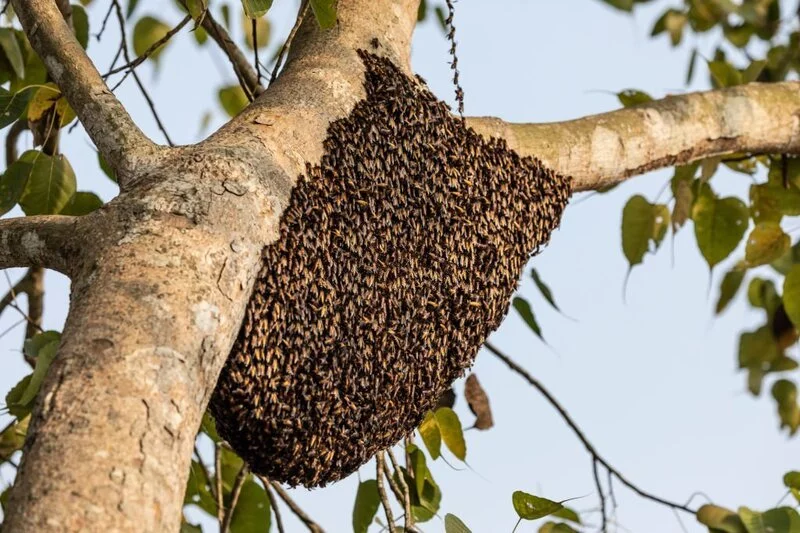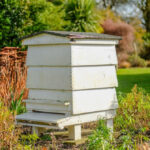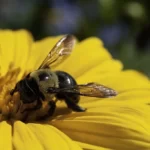We often marvel at the sight of a bee buzzing from flower to flower, tirelessly collecting nectar and pollen, little realizing that these tiny creatures are architects of some truly amazing structures – their nests. Whether it’s a honeybee creating intricate honeycombs or a bumblebee burrowing into the ground, a bee’s nest is a testament to the industrious nature of these incredible insects. But what do these nests look like? Let’s embark on a fascinating journey to explore the homes of bees.
- Kills on contact
- Foam expands to where insects live
- Spray into hard-to-reach areas
- Spray foam
Bee Species and Their Nests
When we talk about bees, it’s important to remember that not all bees are the same. There are thousands of species of bees worldwide, each with their unique traits, and their nests can vary dramatically.
- Honeybees: Honeybees are probably what you picture when you think about a bee’s nest. They build intricate, multi-chambered hives with hexagonal cells made of beeswax, known as honeycombs. Honeybees are social insects, and their nests are busy, populated places.
- Bumblebees: Bumblebees are also social, but their nests are much less structured and smaller compared to honeybees. They often nest in the ground, repurposing old rodent burrows or tussocks of grass.
- Carpenter Bees: Unlike honeybees and bumblebees, carpenter bees are solitary creatures. They create nests by tunneling into wood, leaving behind perfectly round holes.
Each species of bee has a different approach to building their nest, demonstrating the rich diversity of nature. In the following sections, we’ll dive deeper into what each of these nests looks like.
Describing a Honeybee’s Nest
A honeybee’s nest is an architectural marvel, a testament to the industriousness and cooperation of these tiny insects. These nests, often referred to as hives, are made up of numerous hexagonal cells built with beeswax, each meticulously crafted by the worker bees. The hexagonal shape is not a coincidence, but rather a perfectly efficient design, allowing the bees to store the maximum amount of honey while using the least amount of wax.
Inside the hive, you’ll find various chambers, each with its purpose. Some cells are used for storing honey and pollen, which serve as the bee’s food source, while others are used for raising the young, known as broods. At the heart of the hive resides the queen bee, larger than the others and the mother of all the bees in the colony. A busy, buzzing hive of honeybees can hold thousands of bees, all working in harmony for the survival of their colony.
Describing a Bumblebee’s Nest
Bumblebees’ nests, unlike the highly organized hives of honeybees, are a bit more chaotic but just as fascinating. Bumblebees often nest in the ground, commonly in abandoned rodent burrows, beneath piles of leaves, or in thick tufts of grass. Bumblebee nests are much smaller than honeybee hives, typically housing between 50 to 400 bees.
Inside a bumblebee’s nest, you won’t find the neat hexagonal cells of a honeybee hive. Instead, you’ll see rounded waxen pots that the bees use to store nectar, or pollen, or to raise their broods. You might also find the queen bee at the center of the nest, surrounded by her offspring. While it might not have the geometric precision of a honeybee’s hive, a bumblebee’s nest is a cozy, bustling home that suits these fuzzy, friendly bees perfectly.
Describing a Carpenter Bee’s Nest
Carpenter bees march to the beat of their own drum, quite literally carving out their unique paths. Unlike honeybees and bumblebees, carpenter bees are solitary creatures and do not live in colonies. Instead, they create nests by burrowing into soft, unpainted wood.
When a carpenter bee chooses a nesting spot, it chews a perfectly round entrance hole, typically about the size of a dime. The bee then tunnels along the grain of the wood, creating a gallery for laying eggs and storing food. The nest’s interior might not be visible to the naked eye, but knowing that such a tiny creature can excavate a tunnel in solid wood is truly awe-inspiring.
How to Safely Observe a Bee’s Nest
Bees are important pollinators and generally harmless if left undisturbed. However, they can become defensive if they feel their nest is threatened. Here are some tips to observe a bee’s nest safely:
- Maintain a Safe Distance: Stay far enough away not to alarm the bees, but close enough to observe their fascinating behavior.
- Avoid Quick Movements: Fast, sudden movements can scare bees, making them more likely to sting.
- Do Not Block the Nest Entrance: Bees need a clear path to and from their nest. Never stand in their flight path.
- Consider Protective Clothing: If you’re getting closer to a hive, especially a honeybee hive, consider wearing a bee suit to protect yourself from potential stings.
Conclusion
The world of bees is as diverse as it is fascinating. Whether it’s the architectural wonder of a honeybee’s hive, the cosy burrow of a bumblebee, or the wood-carved tunnels of a carpenter bee, each bee’s nest is a testament to nature’s marvel. So next time you see a bee buzzing by, remember that they’re not only efficient pollinators but also remarkable architects of their tiny, perfect homes. Let’s continue to respect and protect these incredible creatures that play such an essential role in our ecosystem.





